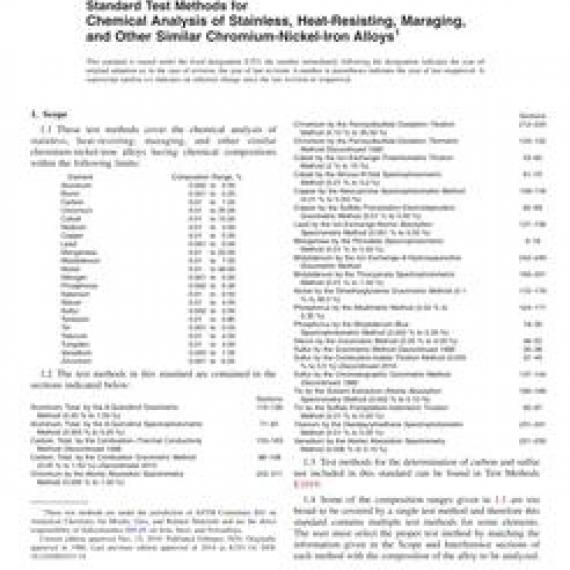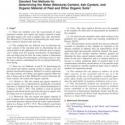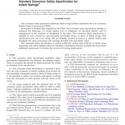No products
ASTM E353-19
ASTM E353-19 Standard Test Methods for Chemical Analysis of Stainless, Heat-Resisting, Maraging, and Other Similar Chromium-Nickel-Iron Alloys
standard by ASTM International, 11/15/2019
Full Description
1.1These test methods cover the chemical analysis of stainless, heat-resisting, maraging, and other similar chromium-nickel-iron alloys having chemical compositions within the following limits:
| Element | Composition Range,% | |||
| Aluminum | 0.002 | to 5.50 | ||
| Boron | 0.001 | to 0.20 | ||
| Carbon | 0.01 | to 1.50 | ||
| Chromium | 0.01 | to 35.00 | ||
| Cobalt | 0.01 | to 15.00 | ||
| Niobium | 0.01 | to 4.00 | ||
| Copper | 0.01 | to 5.00 | ||
| Lead | 0.001 | to 0.50 | ||
| Manganese | 0.01 | to 20.00 | ||
| Molybdenum | 0.01 | to 7.00 | ||
| Nickel | 0.01 | to 48.00 | ||
| Nitrogen | 0.001 | to 0.50 | ||
| Phosphorus | 0.002 | to 0.35 | ||
| Selenium | 0.01 | to 0.50 | ||
| Silicon | 0.01 | to 4.00 | ||
| Sulfur | 0.002 | to 0.50 | ||
| Tantalum | 0.01 | to 0.80 | ||
| Tin | 0.001 | to 0.05 | ||
| Titanium | 0.01 | to 4.50 | ||
| Tungsten | 0.01 | to 4.50 | ||
| Vanadium | 0.005 | to 1.00 | ||
| Zirconium | 0.001 | to0.20 | ||
1.2The test methods in this standard are contained in the sections indicated below:
| Sections | |
| Aluminum, Total, by the 8-Quinolinol Gravimetric Method (0.20 % to 7.00%) | 119-126 |
| Aluminum, Total, by the 8-Quinolinol Spectrophotometric Method (0.003 % to 0.20%) | 71-81 |
| Carbon, Total, by the Combustion-Thermal Conductivity Method-Discontinued 1986 | 153-163 |
| Carbon, Total, by the Combustion Gravimetric Method (0.05 % to 1.50%)-Discontinued 2013 | 98-108 |
| Chromium by the Atomic Absorption Spectrometry Method (0.006 % to 1.00%) | 202-211 |
| Chromium by the Peroxydisulfate Oxidation-Titration Method (0.10 % to 35.00%) | 212-220 |
| Chromium by the Peroxydisulfate-Oxidation Titrimetric Method-Discontinued 1980 | 145-152 |
| Cobalt by the Ion-Exchange-Potentiometric Titration Method (2 % to 15 %) | 53-60 |
| Cobalt by the Nitroso-R-Salt Spectrophotometric Method (0.01 % to 5.0%) | 61-70 |
| Copper by the Neocuproine Spectrophotometric Method (0.01 % to 5.00)%) | 109-118 |
| Copper by the Sulfide Precipitation-Electrodeposition Gravimetric Method (0.01 % to 5.00%) | 82-89 |
| Lead by the Ion-Exchange-Atomic Absorption Spectrometry Method (0.001 % to 0.50%) | 127-136 |
| Manganese by the Periodate Spectrophotometric Method (0.01 % to 5.00%) | 9-18 |
| Molybdenum by the Ion Exchange-8-Hydroxyquinoline Gravimetric Method | 242-249 |
| Molybdenum by the Thiocyanate Spectrophotometric Method (0.01 % to 1.50%) | 190-201 |
| Nickel by the Dimethylglyoxime Gravimetric Method (0.1 % to 48.0%) | 172-179 |
| Phosphorus by the Alkalimetric Method (0.02 % to 0.35%) | 164-171 |
| Phosphorus by the Molybdenum Blue Spectrophotometric Method (0.002 % to 0.35%) | 19-30 |
| Silicon by the Gravimetric Method (0.05 % to 4.00%) | 46-52 |
| Sulfur by the Gravimetric Method-Discontinued 1988 | 30-36 |
| Sulfur by the Combustion-Iodate Titration Method (0.005 % to 0.5%)-Discontinued 2014 | 37-45 |
| Sulfur by the Chromatographic Gravimetric Method-Discontinued 1980 | 137-144 |
| Tin by the Solvent Extraction-Atomic Absorption Spectrometry Method (0.002 % to 0.10%) | 180-189 |
| Tin by the Sulfide Precipitation-Iodometric Titration Method (0.01 % to 0.05%) | 90-97 |
| Titanium by the Diantipyrylmethane Spectrophotometric Method (0.01 % to 0.35%) | 231-241 |
| Vanadium by the Atomic Absorption Spectrometry Method (0.006 % to 0.15%) | 221-230 |
1.3Test methods for the determination of carbon and sulfur not included in this standard can be found in Test Methods E1019.
1.4Some of the composition ranges given in 1.1 are too broad to be covered by a single test method and therefore this standard contains multiple test methods for some elements. The user must select the proper test method by matching the information given in the Scope and Interference sections of each method with the composition of the alloy to be analyzed.
1.5The values stated in SI units are to be regarded as standard.
1.6This standard does not purport to address all of the safety concerns, if any, associated with its use. It is the responsibility of the user of this standard to establish appropriate safety, health, and environmental practices and determine the applicability of regulatory limitations prior to use. Specific hazards statements are given in Section 6 and in special Warning paragraphs throughout these test methods.
1.7This international standard was developed in accordance with internationally recognized principles on standardization established in the Decision on Principles for the Development of International Standards, Guides and Recommendations issued by the World Trade Organization Technical Barriers to Trade (TBT) Committee.


































